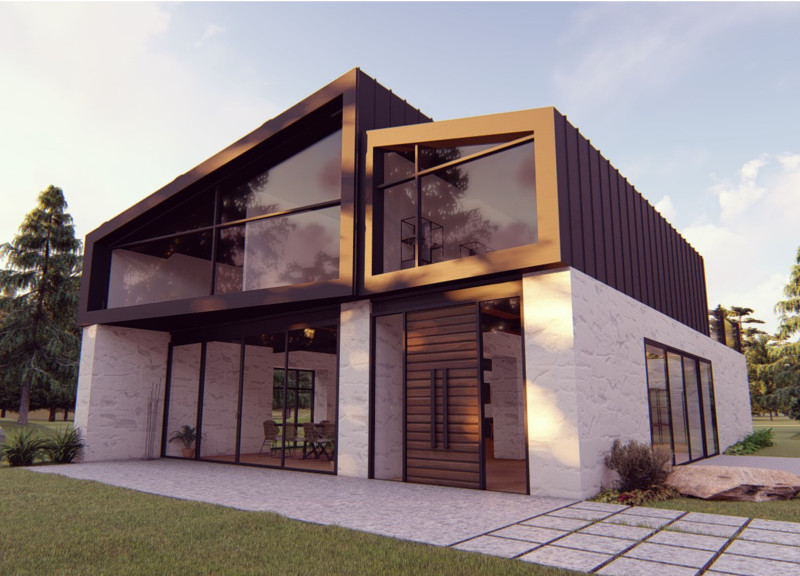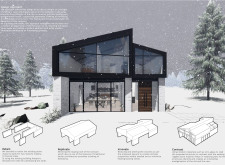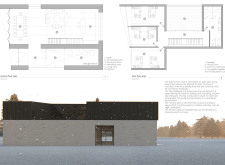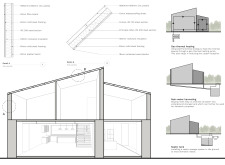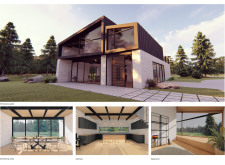5 key facts about this project
Design and Functionality
The design features an open-plan layout on the ground floor, comprising key areas such as the foyer, kitchen, workshop, and dedicated spaces for tea packing and drying. This approach fosters social interaction while clearly delineating functional areas. The first floor is allocated for private quarters, including guest rooms and a multi-purpose terrace designed for mediation and outdoor activities. A prominent aspect of the project is the integration of large glass panels that enhance natural light penetration and facilitate visual links to the surrounding landscape.
Materials and Construction Techniques
This project leverages a variety of materials chosen for both their aesthetic qualities and functional performance. Key materials include zinc panels for their weather resistance, reclaimed wood for warmth, and robust steel framing for structural integrity. The use of rockwool insulation within the walls improves thermal efficiency, resulting in reduced energy consumption. The preservation of the existing stone masonry provides essential thermal mass while maintaining the historical context of the site.
Sustainable Design Practices
Sustainability is central to the design approach, integrating technologies such as geothermal heating and rainwater harvesting, which minimize environmental impact and promote energy efficiency. The careful arrangement of spaces and selection of materials not only enhance the project's durability but also contribute to its low-carbon footprint. Unique features such as multi-purpose terraces add versatility to the design, allowing occupants to engage with the natural surroundings in various ways.
Innovative Design Elements
This project stands out for its ability to merge traditional architectural forms with contemporary design language. The striking contrast between the rugged stone walls and sleek metallic surfaces effectively captures the essence of the surrounding environment while offering a fresh perspective on local architectural heritage. The thoughtful integration of indoor and outdoor spaces encourages a seamless transition between environments, ensuring that nature remains a focal point throughout the design.
For more detailed insights into this architectural project, including architectural plans, architectural sections, and various architectural designs, readers are encouraged to explore the project presentation. This exploration will provide a deeper understanding of the architectural ideas and innovative strategies that shape this unique and functional design.


